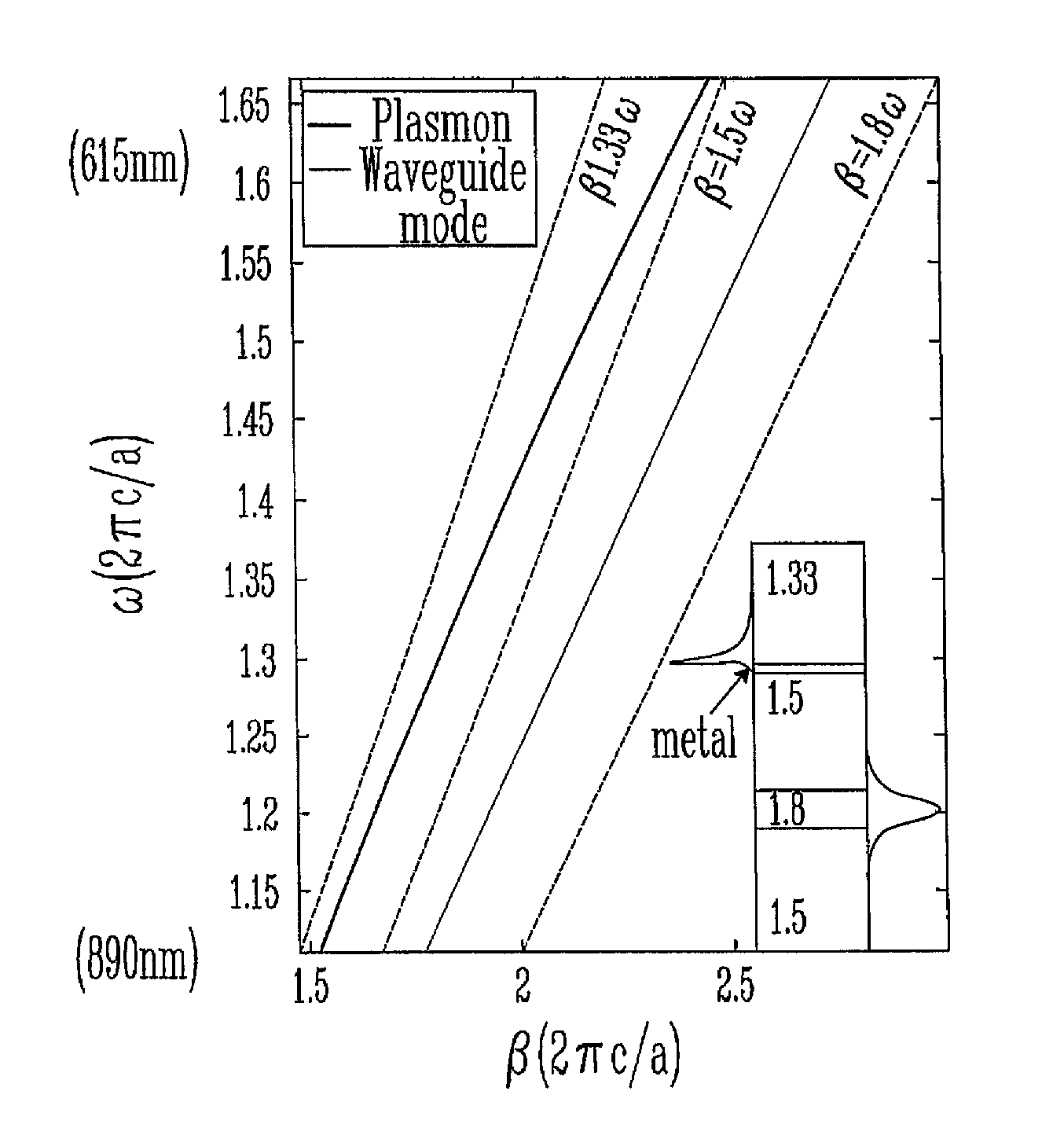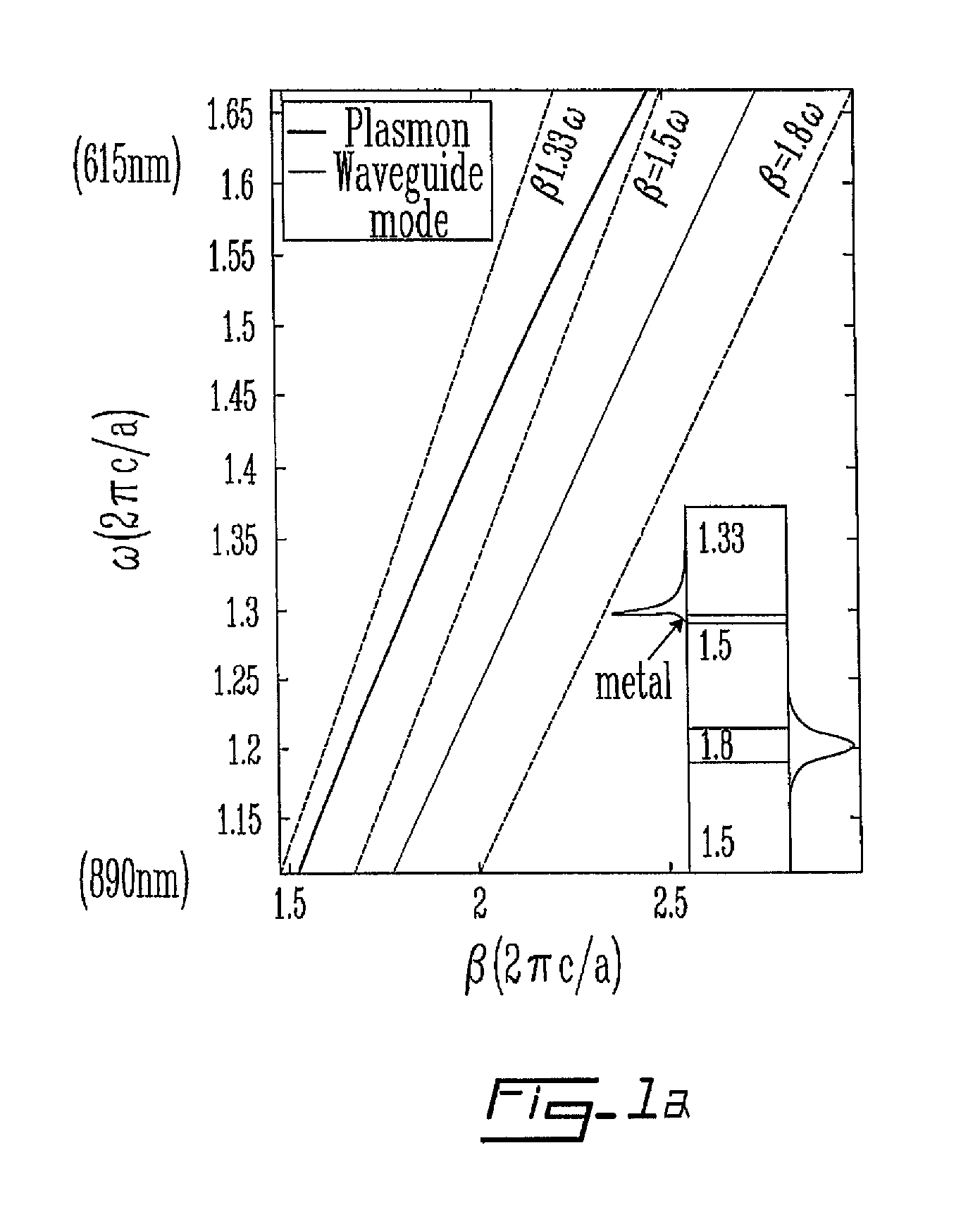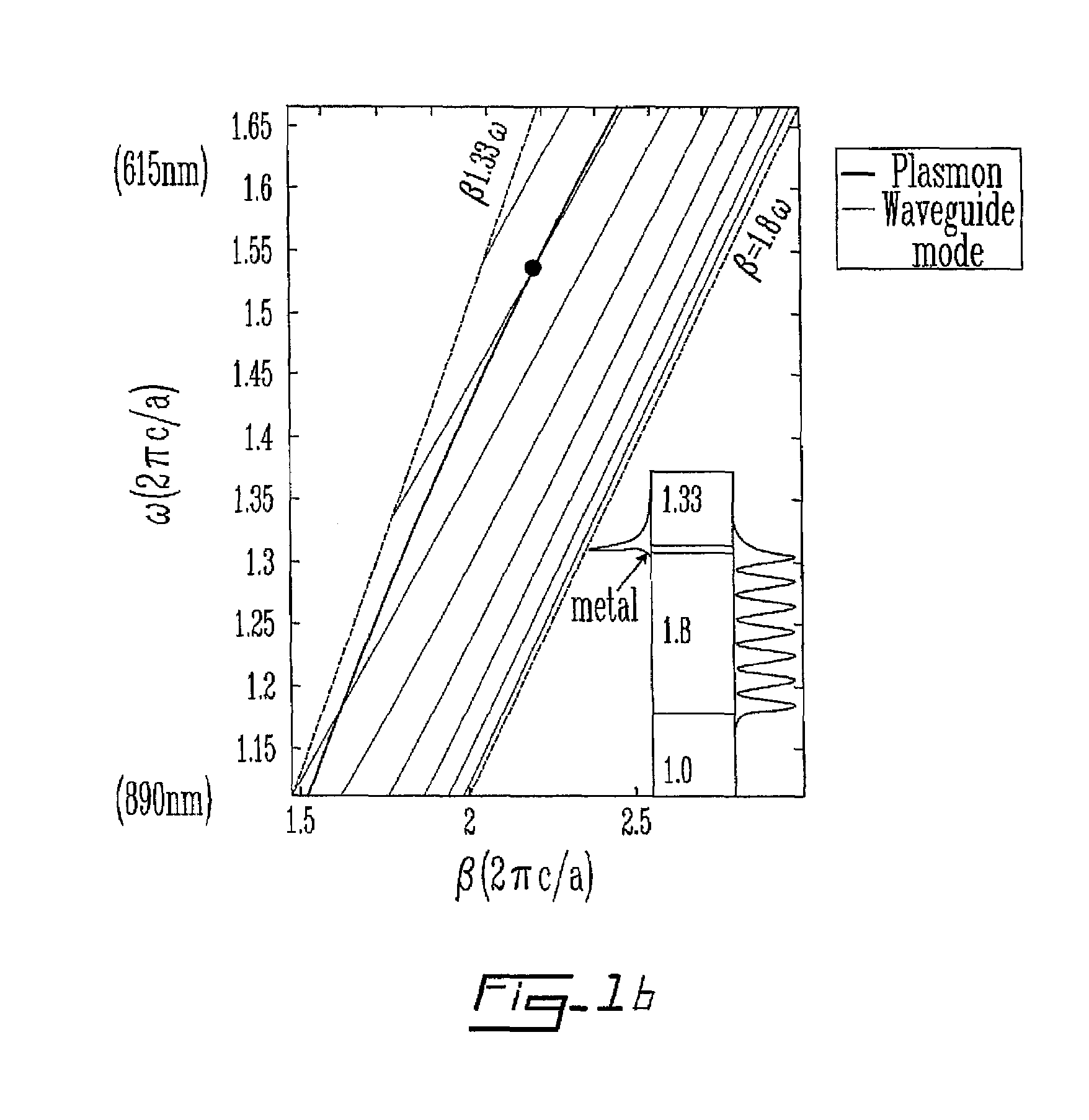Plasmon excitation by the gaussian-like core mode of a photonic crystal waveguide
a plasmon mode and photonic crystal waveguide technology, applied in the field of surface plasmon resonance (spr) sensors, can solve the problems of inevitable decrease of sensitivity of spr sensors, high cost and large size of commercially available systems, and difficult phase matching between plasmon mode and fundamental waveguide mod
- Summary
- Abstract
- Description
- Claims
- Application Information
AI Technical Summary
Benefits of technology
Problems solved by technology
Method used
Image
Examples
Embodiment Construction
[0037]The non-restrictive illustrative embodiment of a photonic crystal waveguide-based SPR sensor and corresponding method according to the present invention will now be described.
[0038]In the non-restrictive illustrative embodiment of the present invention, SPR is produced by excitation with a lowest loss TM polarized Gaussian-like leaky core mode of a band gap guiding photonic crystal (PC) or, more generally, an antiguiding waveguide. The term Gaussian-like refers to a bell-shaped distribution of the leading energy flux component (component along the waveguide direction) in the core region of the waveguide. The terms band gap guiding and antiguiding both refer to a transmission mechanism wherein an effective refractive index neff of a waveguide propagating mode is smaller than that of the waveguide immediate cladding. Such unusual modes are called leaky modes since, even in the absence of material losses, the propagation loss of such modes is non-zero due to slow radiation of ene...
PUM
| Property | Measurement | Unit |
|---|---|---|
| thick | aaaaa | aaaaa |
| refractive index | aaaaa | aaaaa |
| refractive index | aaaaa | aaaaa |
Abstract
Description
Claims
Application Information
 Login to View More
Login to View More - R&D
- Intellectual Property
- Life Sciences
- Materials
- Tech Scout
- Unparalleled Data Quality
- Higher Quality Content
- 60% Fewer Hallucinations
Browse by: Latest US Patents, China's latest patents, Technical Efficacy Thesaurus, Application Domain, Technology Topic, Popular Technical Reports.
© 2025 PatSnap. All rights reserved.Legal|Privacy policy|Modern Slavery Act Transparency Statement|Sitemap|About US| Contact US: help@patsnap.com



